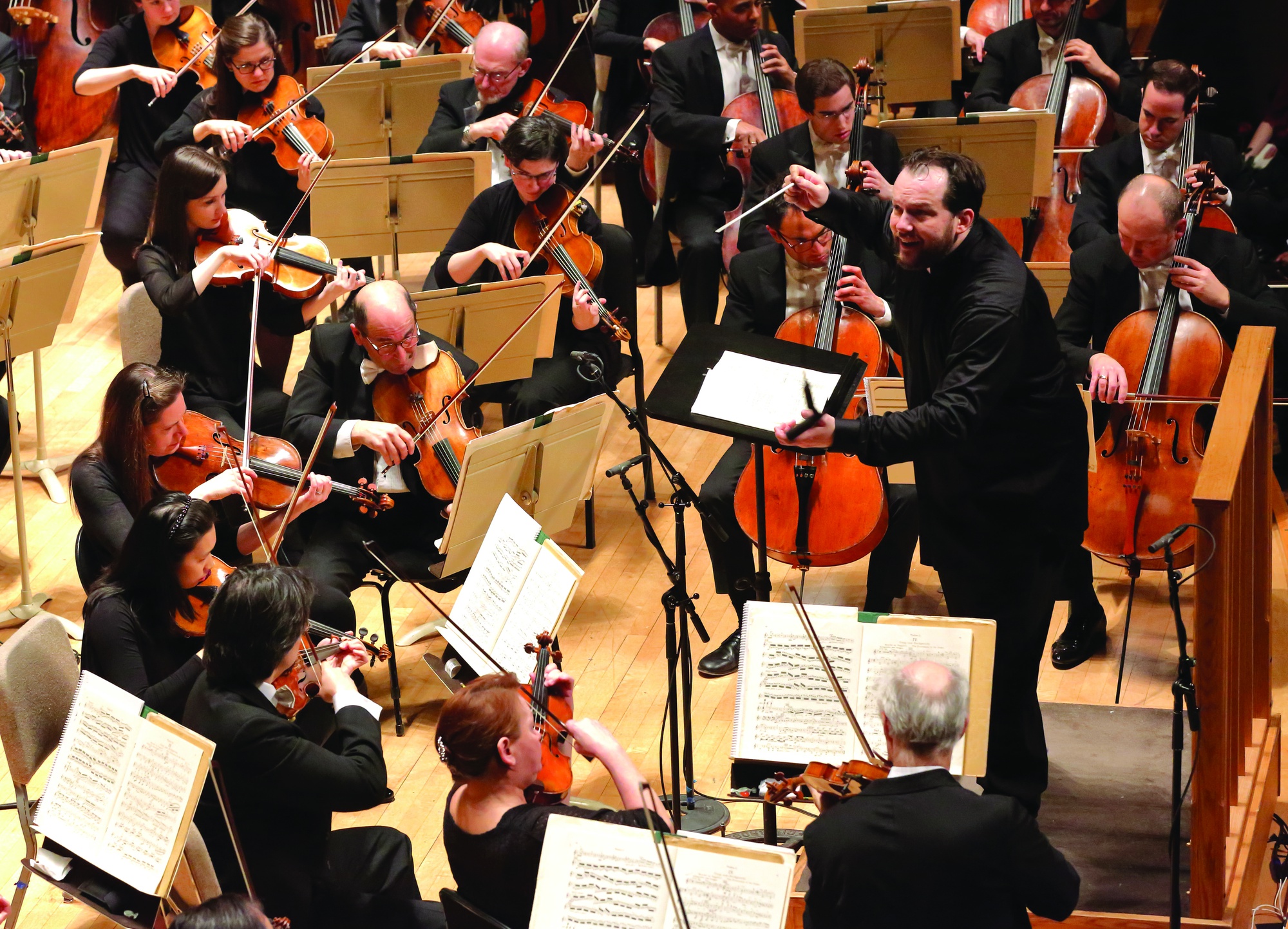
News
Cambridge Residents Slam Council Proposal to Delay Bike Lane Construction

News
‘Gender-Affirming Slay Fest’: Harvard College QSA Hosts Annual Queer Prom

News
‘Not Being Nerds’: Harvard Students Dance to Tinashe at Yardfest

News
Wrongful Death Trial Against CAMHS Employee Over 2015 Student Suicide To Begin Tuesday

News
Cornel West, Harvard Affiliates Call for University to Divest from ‘Israeli Apartheid’ at Rally
Andris Nelsons Brings Modern and Classical Symphonies to Life

Boston Symphony Orchestra’s Andris Nelsons conducted Gunther Schuller’s “Seven Studies on Themes of Paul Klee,” Wolfgang Amadeus Mozart’s “Piano Concerto No. 22 in E-flat, K.482,” and Ludwig van Beethoven’s “Symphony No. 3 in E-flat, Opus 55, Eroica,” to enthusiastic applause and standing ovations on Feb. 17. In a packed Symphony Hall, musical virtuosity brought to life an enthralling blend of Modernism and Classical tradition.
The performance began with a rousing rendition of Schuller's “Seven Studies on Themes of Paul Klee,” a musical work of “thirdstream,” a genre of Schuller’s own invention falling halfway between classical and jazz. Based on Swiss modernist painter Paul Klee's Expressionist and Cubist paintings, Schuller’s synesthetic symphony contained seven distinct movements, each corresponding to a separate painting.
Nelsons led the orchestra through the twists and turns of the 23-minute piece, fraught with dissonant chords and tension. In “Antique Harmonies,” brass and woodwind evoked the repeated cadences of Klee’s patterned, blockish artistic style. “Abstract Trio,” during which only three instruments played at a time, mimicked the three, defined, abstract figures in Klee’s painting. And in the seventh and final movement, “Pastorale,” a striking oboe melody cut through layers of strings.
If “Seven Studies on Themes of Paul Klee” was a lesson in imitation, Mozart’s “Piano Concerto No. 22 in E-flat” was one in intricacy. Featured pianist Emanuel Ax deftly navigated the rapid call-and-response trills and fanfares of the allegro movement, as well as the andante’s mournful, melodic turns in C-minor. The symphony concluded with the third movement, an allegro in B-flat, a finale characterized by its formality and musical logic.
The performance culminated with Beethoven’s sweeping, magnificent Symphony No. 3, “Eroica.” Though he first dedicated his third symphony to French military leader Napoleon Bonaparte as a symbol of revolution, Beethoven later renamed the 51-minute symphony “Sinfonia eroica” after Bonaparte ambitiously declared himself to be emperor in a power grab that the composer deplored.
Nelsons swept through an energetic rendition of the “Allegro con brio,” a complex, introductory movement punctured by harmonically tense C-sharp chords. The symphony proceeded to “Marcia funebre: Adagio assai,” a methodical, solemn funeral march in C-minor. This seriousness and gravitas contrasted starkly with the following movement, a dynamic, spirited “Scherzo” interspersed with hunting calls by the horn section.
Nelsons concluded Beethoven’s “Eroica” with the grand “Finale: Allegro molto.” The twelve-minute tour de force demanded great rigor from the strings, whose bows bobbed rapidly through the quick tempo of Beethoven’s forceful “Finale.” Its joyful grandeur and dynamism dovetailed elegantly with its celebratory flourishes, a riveting conclusion met with a well-deserved standing ovation.
Want to keep up with breaking news? Subscribe to our email newsletter.
